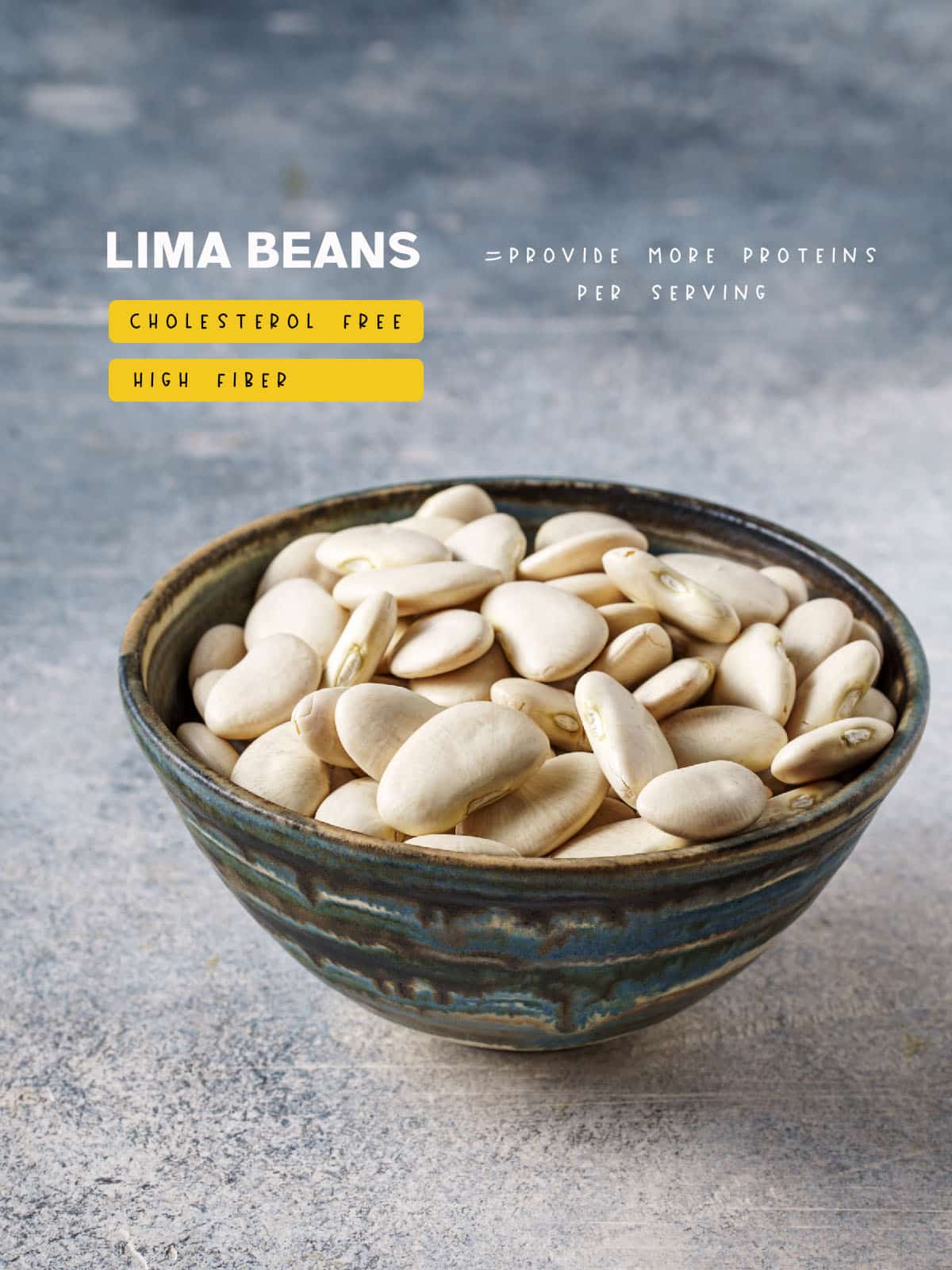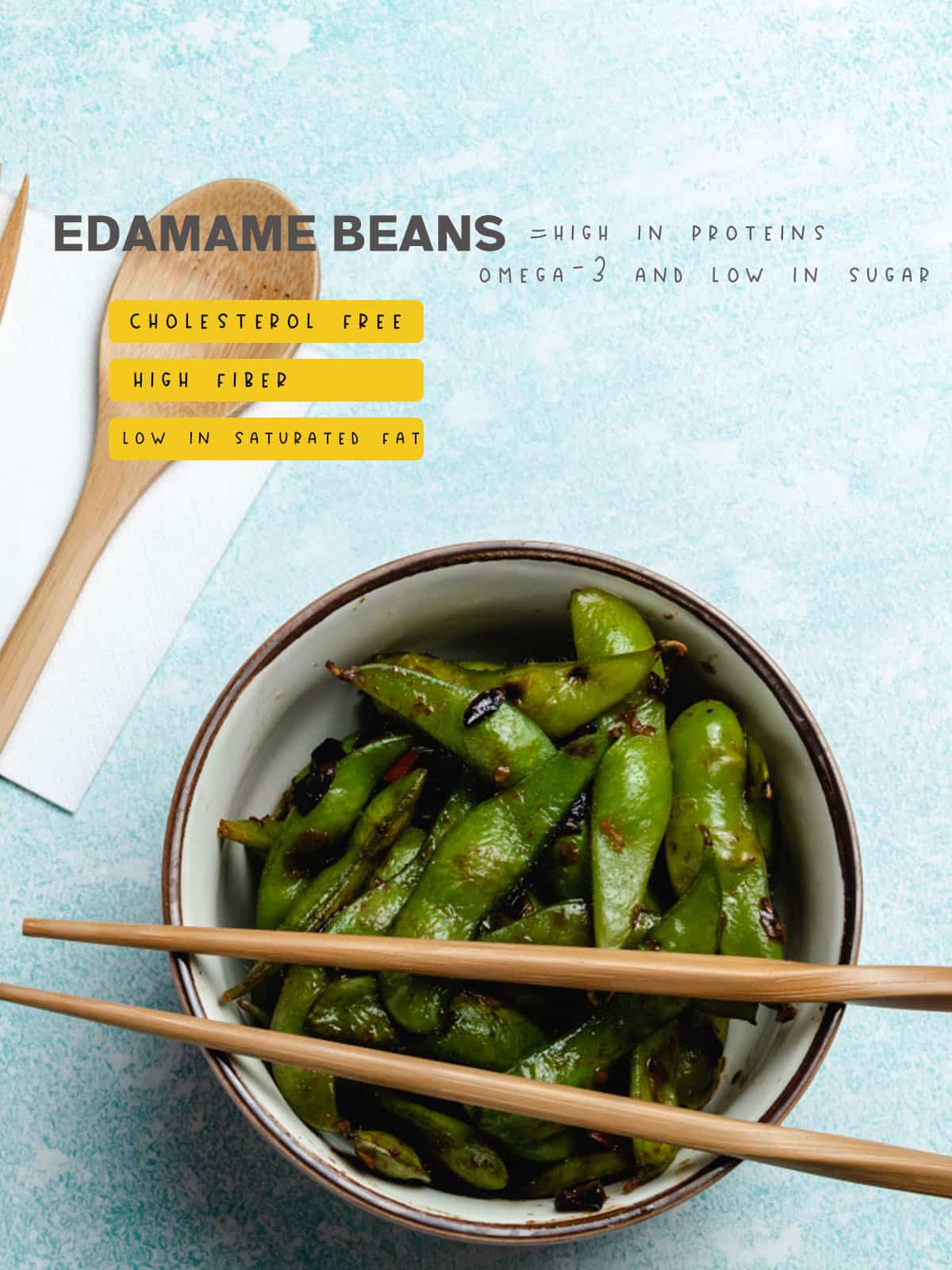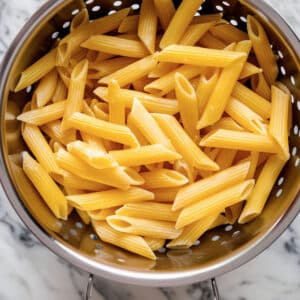Do you know the difference between edamame and lima beans? If not, don't worry; most people don't. When most people think of beans, they automatically think of black beans or pinto beans. However, there are many different kinds of beans, each with its own unique flavor and texture.
Edamame vs lima beans seem like they would be pretty similar, but there are some distinct differences between the two. A lot of people think they are the same thing. But they're not!
So what's the difference?
In this post, we'll compare edamame and lima beans to see which is better. Both have their pros and cons, but ultimately, it's up to you to decide which one is your favorite. Let's look at what makes edamame unique and how it compares to lima beans. We'll also provide some tips on how to cook both vegetables. So, which one should you choose? Let's find out!
What are Edamame beans?
Edamame beans (枝豆) are young soybeans harvested before they are ripe. They are typically boiled or steamed and served with salt or other flavors, often eaten as a snack. In Japan, they are usually blanched in 4% salt water for 5 minutes.
Edamame can be found fresh, frozen, or dried. It is native to East Asia and is a common ingredient in Japanese cuisine. They are popular as a snack food in the United States, but people are starting to catch on to this soybean as a source of protein to add to a variety of other dishes. Edamame beans offer several nutritional benefits, including protein, fiber, vitamins, and minerals. They are a good source of omega-3 fatty acids and are low in saturated fat.

What are Lima Beans?
Lima beans are a type of legume that is native to Central and South America. They are also known as butter beans or sieva beans, making them a common ingredient in Latin American, Caribbean, and Southern cuisine.
Lima beans have a creamy texture and a nutty flavor. It is common to use them in soups, stews, and casseroles. Lima beans also make a popular Peruvian dish called tacu tacu.
Edamame vs lima beans
Some key distinctions set these two vegetables apart when comparing edamame vs. lima beans. Let's take a closer look at the differences between edamame vs lima beans.

1 Type of beans
Edamame beans
Edamame is immature soybeans that are still in the pod. They are harvested earlier than mature soybeans, and as a result, they have a more delicate flavor. Why are edamame beans harvested early? The answer has to do with their intended use. In many cases, edamame is used as a fresh vegetable, and when soybeans are allowed to mature fully, they become too hard to eat in their raw state.
Lima beans
Lima beans, on the other hand, are dried mature beans. They are a type of Phaseolus lunatus, a species of legume that includes kidney beans and black-eyed peas. Lima beans get their name from the city of Lima in Peru, where they were first grown. They can be white, tan, yellow, or red and have a slightly nutty flavor. Lima beans are also known as butter beans because of their creamy texture.
2 Appearance
Edamame beans
Appearance-wise, edamame pods are slightly larger and more elongated than lima beans. The pods contain two and four beans, which are vibrant green in color and have a hairy exterior. Inside the pod, the seeds range from yellow-green to bright green. Fresh edamame pods are slightly crispy and have a grassy taste, while frozen ones are more tender.
Lima Beans
Lima beans are shorter and more rounded in shape than edamame pods. They have a smooth exterior and contain two to three large, oval-shaped beans. The seeds inside the pod are white or cream-colored and have a starchy taste and a slightly mealy texture.
The rich, buttery flavor of lime beans makes them sometimes called butter beans. Grocery stores commonly stock these flat, oval-shaped vegetables in various colors. Nutrient-dense, affordable, and simple to prepare, they are the perfect meal. Despite many people's aversion to eating lima beans, these beans are a fantastic food to include in your diet at any age.
3 Flavor
Edamame beans: Edamame comes from the soybean that gives us tofu and soy milk; young beans are picked before hardening and take on a more beany flavor. This results in edamame having a sweeter, better taste than tofu or soy milk. In a way, it reminds me of peas but with a more delicate, nutty flavor.
Lima beans: Often referred to as butter beans, these beans have a smooth, creamy texture with a nutty flavor that complements a variety of dishes. They're also quite starchy, which makes them a great thickening agent for soups and stews.
Read:
4 Uses
Edamame
Boiling and lightly salting these beans makes a tasty snack. The boiling helps to release the natural sweetness of the edamame beans. They are often used as a side dish or added to salads, soups, and stir-fries. You can find frozen edamame in most grocery stores - look for them in the freezer section near the other frozen vegetables.
Lima Beans
You can eat lima beans fresh or cooked, particularly in recipes where they are mashed or puréed, such as in dips or spreads.
Read:
5 Texture
Edamame beans
Once boiled, the seeds become soft and slightly chewy texture because of the high protein and fiber content. There is no need to consume the pod, as it is not edible.
Lima beans
Lima beans have a softer, mealy texture thanks to their high starch content. When cooked, the outer skin of the lima bean breaks down, revealing a soft and creamy inner core.
6 Nutritional value
Edamame is an excellent source of protein, fiber, and vitamins, while lima beans are a good source of protein, fiber, and iron. Both vegetables are low in fat and calories.
7 Health benefits
Edamame has been linked to a lower risk of heart disease, cancer, and obesity, while lima beans may help improve blood sugar control and reduce the risk of colon cancer.
8 Price
Edamame is typically more expensive than lima beans, but the price can vary depending on the type of bean and where you purchase it.
9 Storage
You can store edamame and lima beans in the fridge for 4 days up to a week. If you want to keep them longer, cook them and freeze them.
Comparison table: Edamame vs Lima beans
| Comparison | Edamame | Lima Beans |
|---|---|---|
| Type of beans | Soybeans | Legumes |
| Appearance | The pods are vibrant-green and have a hairy exterior. | Shorter and have a smooth exterior. Contain two to three large, oval-shaped beans. |
| Flavor | Have a sweeter, similar to peas but with a more delicate, nutty flavor | Referred to as butter beans, have a smooth, creamy texture with a nutty flavor. |
| Uses | Appetizer or a tasty snack | Used in recipes where they are mashed or puréed, such as in dips or spreads. |
| Texture | similar texture but a bit firmer than lima beans | the seeds have a softer, mealy texture. |
| Nutritional value | excellent source of protein, fiber, and vitamins, | excellent source of protein, fiber, and vitamins, |
| Price | a bit expensive than lima beans | a little cheaper than edamame beans |
| Storage | Can be stored in the fridge for 4 days. Can keep frozen for 6 months. | Can be stored in the fridge for 4 days. Can keep frozen for 6 months. |
Bottom line:
Both edamame and lima beans are great for you, but they each have their own unique nutritional benefits. If you are looking for food high in fiber, go with lima beans. And if you're looking for something delicious, go with both! You can lower your carb intake if you go with edamame.
What does edamame taste like?
Edamame has a sweet, nutty taste similar to peas or lima beans. Grassy or earthy are also common descriptions of edamame's flavor. When cooked, edamame turns a bright green color and becomes slightly softer in texture but retains a firmness similar to that of a cooked green bean.
If you have never tried edamame before, the best way to describe the taste is to say it is a cross between a sweet pea and a lima bean. The flavor is slightly grassy but also has hints of sweetness and earthiness.
What do lima beans taste like?
Lima beans, also known as butter beans, have a creamy texture and a nutty flavor. When cooked, lima beans turn a pale green color. Lima beans are perfect for soups and stews because they absorb the flavors of the other ingredients well.
If you have never tried lima beans before, the best way to describe the taste is to say it is similar to a buttery green bean. The texture is creamy, and the flavor is nutty with a slightly sweet taste.
So, what is the difference between the two?
Both edamame and lima beans have a similar texture, but edamame is slightly more firm. Edamame has a sweeter, nuttier taste, while lima beans have a more savory, buttery flavor. In terms of color, edamame is a brighter green, while lima beans are paler.
How much protein is in edamame?
Amino acids are the building blocks of protein. The human body cannot produce essential amino acids, so we must get them from our diet. Edamame is a protein powerhouse because edamame contains all nine essential amino acids. It has a higher nutritional value than grains, nuts, and seeds as a complete protein source.
One cup (160 g) of cooked edamame provides approximately 18.4 grams of protein. This means that whether you are eating edamame as a snack or adding it to a meal, you are getting a good dose of protein.
How much protein is in lima beans?
Lima beans are also a good source of protein. One cup (188 g) of cooked lima beans contains about 14.7 grams of protein. This is about 29% of the recommended daily intake for protein. Lima beans are also a good source of fiber and contain many vitamins and minerals, including iron, copper, manganese, and magnesium.
So, if you are looking for a good source of protein, both edamame and lima beans are good choices. But if you are trying to lose weight or watch your carbohydrate intake, edamame may be the better choice since it is lower in calories and carbs.
How about the storage?
Edamame:
Edamame is a type of green soybean that is harvested when it is still young and tender. You can find edamame beans fresh or frozen and sometimes canned. When selecting edamame, look for pods that are bright green and plump. Avoid any that are yellow or have wrinkled pods.
You can store fresh edamame in the refrigerator for up to four days. If you're not using them immediately, you can remove the beans from their pods and store them in a container lined with damp paper towels.
It is essential to eat fresh edamame as they lose its sweetness as they age. Store them in the fridge for no more than 2 days or cook and refrigerate them for about a week. You can also freeze them for up to 6 months. But before doing that, you need to cook them in their pods for 3 minutes, then remove them and let them cool before freezing.
Lima beans:
Fresh lima beans aren't widely available outside their peak growing season, which runs from June through September. If you find them fresh, choose bright green beans, plump and still in their pods. Avoid beans that are yellow or have wrinkles on pods.
You can store fresh lima beans in pods in the refrigerator for up to four days. If you're not using them immediately, you can remove the beans from their pods and store them in a container lined with damp paper towels.
You can also find lima beans in the frozen section of your grocery store year-round. Look for packages of whole beans or cut and shelled beans.
Canned lima beans are also an option, although they tend to be softer and not as flavorful as fresh or frozen beans.
Tips for Preparation
Enzymes are essential for digesting nutrients and are also responsible for distinct flavors for vegetables. But, they are also accountable for vegetables' dull color even when frozen. Blanching is essential for brightening their color.
Blanching is the process of dipping vegetables in boiling water for a brief period and then shocking them in cold water. This process deactivates enzymes and brightens colors.
For the best flavor, use fresh edamame. But, if you must use frozen edamame, look for bags that say "flash frozen." As a result, they freeze edamame within minutes of harvesting, preserving its flavor.
How to blanch or parboil edamame beans:
Step 1 Rinse the edamame under cold water and drain.
Step 2 Fill a large pot with water, boil it, and add the edamame.
Step 3 Cook for 2 to 3 minutes or until the edamame is ready to your desired level of doneness.
Step 4 Remove edamame from the pot with a slotted spoon and place it in a bowl of ice water to stop the cooking. Let the beans sit for 1-2 minutes.
Step 5 Drain edamame and pat dry with a paper towel. Serve immediately or store in an airtight container in the refrigerator for up to two days.
How to blanch or parboil lima beans:
Step 1 Brisky boil one gallon of water in a large kettle. For each gallon of water, blanch 1 pound of lima beans.
Step 2 Add the beans to the boiling water by submerging them using a basket, a strainer, or a cheesecloth. Put the lid on and let the water return to a boil as quickly as possible.
Step 3 Beans of different sizes require different cooking times. It takes two minutes for small lima beans, three minutes for medium beans, and four minutes for large beans.
Step 4 Remove quickly, and submerge the beans in an ice water bath to stop the cooking. Let them cool for two minutes and spread them out on a clean towel to dry.
Step 5 Use within two days or store in the freezer for six months in an airtight container.
Pack and freeze
After blanching the beans, I like to flash-freeze them. I prefer this method when preserving the flavor and texture of vegetables.
First, I arrange the beans in a single layer on a parchment-lined baking sheet and place them in the freezer for about an hour. Once you freeze solid, I transfer them to a freezer bag leaving as much air as possible. This way, I can grab a handful of beans without thawing the entire batch whenever I need them. Additionally, using this method, you can prevent clumping and freezer burn, and enjoy fresh-tasting beans all winter.




